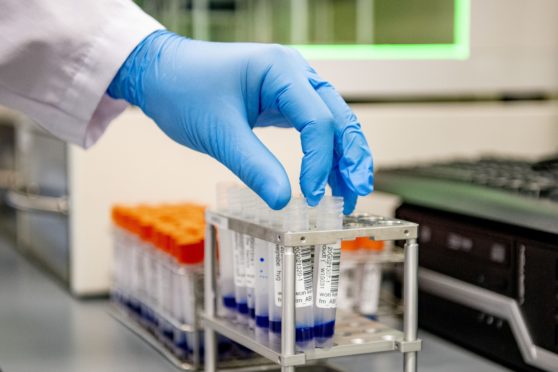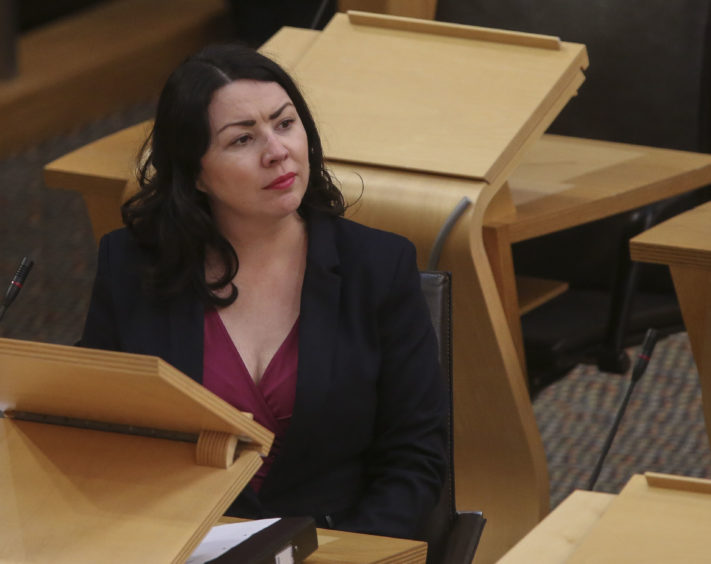A quarter of all Scottish deaths linked to coronavirus occurred in care homes, new figures have revealed.
For the first time, the National Records of Scotland (NRS) has published new statistics which reveal the number of people who died of either suspected or confirmed Covid-19 in the country’s care homes.
A total of 237 (25%) of Covid-19 deaths registered up to April 12 related to deaths in care homes, while 62% were in hospitals and 13% were at home or non-institutional settings.
The organisation introduced a new recording method last week which includes all cases where Covid-19 is mentioned in a person’s death certificate while daily figures produced by Health Protection Scotland (HPS) have so far included only individuals who have died within 28 days of testing positive for the virus.
This method recorded 962 deaths in Scotland linked to Covid-19 as of April 12, compared to the 569 fatalities recorded by the HPS system at that time – a jump of 41%.
The vast majority of Covid-19 deaths in Scotland so far have been among those aged over 65, with those aged over 75 accounting for 37% of the total.
Deaths have also been broken down by gender and the local health board involved.
Of the 969 Covid-19 deaths recorded last week, 56.5% were men and 37.3% were women.
Coronavirus was linked to 1.3% and 0.8% of deaths in the Tayside and Grampian health board areas respectively, with Highland linking the virus to 0.9% of deaths and 1.2% in Fife.
Statistics from the NRS also show the total number of deaths registered in Scotland for any reason last week was 1,969, an increase of 225 from the number registered in the previous week, and the highest total since at least 2004.
The average number of deaths recorded in the same week over the last five years was 1,100.
Scottish Labour health spokeswoman Monica Lennon has called for the Scottish Government to publish an emergency plan to prevent the continued rapid spread of coronavirus in care homes, claiming it has been “too slow to act”.
She has written to Health Secretary Jeane Freeman asking whether hospital patients are tested for the virus before they are discharged to a care home.
Ms Lennon said each life lost in a care home due to coronavirus is a “tragedy”.
She added: “It’s heartbreaking that care staff and families fear that older people are being forgotten in the fight against coronavirus.
“The Scottish Government has been too slow to act – Nicola Sturgeon must publish an emergency plan for care homes with guaranteed support on testing and PPE.
“Hundreds of older people have been discharged from hospital in recent weeks to relieve pressure on our NHS – and many of them to residential care.
“Worryingly, we now know that coronavirus is spreading within hospitals, as well as care homes, but efforts to test, trace and isolate the virus are woeful.
“That’s why I’ve asked Jeane Freeman whether hospital patients are being treated for Covid-19 before being discharged to care homes – and if not, why not?
“Urgent action is needed to save lives.”
Nicola Sturgeon announced all symptomatic residents will be tested from now on, instead of just the first person showing Covid-19 symptoms in a home.
But she added there has been “no evidence” to suggest that the number of deaths would be lower if testing of residents and staff had been increased earlier.
The First Minister added the Scottish Government will be “moving as quickly as possible” to expand testing to all symptomatic care home residents but stressed it is “not strictly necessary” and will be done to give confidence to relatives, staff and the wider public.
She said: “We already test the first residents in any care home to become symptomatic of coronavirus in order to establish the presence of the virus in that home and then ensure that all appropriate measures are taken to protect all residents.
“However, we’re moving now to test all symptomatic patients in care homes.
“The advice to me is that while this is not strictly necessary, nor will it change the clinical management of cases at care homes, it is nevertheless important for the confidence of relatives staff and the wider public, given the vulnerability of care homes.
“But let me also stress that guidance to care homes is already very clear about isolation and social distancing, and that remains the most important factor in making sure that we’re managing and preventing infections in care homes.”
Additionally, Ms Sturgeon said people leaving hospital to return to care homes in Scotland will not be routinely tested, in contrast to England.
She said testing people not showing symptoms is unreliable and she does not want to give care homes “false assurance” that a person returning is not infected, arguing it could cause staff to wrongly relax infection control measures.











